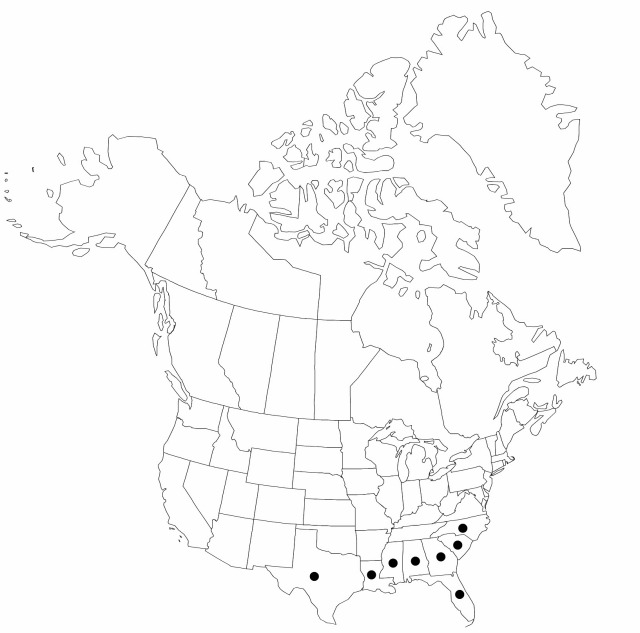Difference between revisions of "Rhynchospora divergens"
Amer. J. Sci. Arts, ser. 2, 7: 409. 1849.
FNA>Volume Importer |
FNA>Volume Importer |
(No difference)
| |
Revision as of 19:08, 24 September 2019
Plants perennial, densely cespitose, 10–60 cm; rhizomes absent. Culms erect or spreadingarching, linearfiliform, terete, leafy toward base. Leaves overtopped by culm; blades ascending, filiform, 0.3–0.5 mm wide, margins deeply involute, then channeled, apex trigonous, setaceous. Inflorescences: spikelet clusters 1–2(–4), dense(–open), narrowly to broadly turbinate; branches capillary, variously elongate; leafy bracts setaceous, proximal exceeding clusters. Spikelets brownish, lanceellipsoid to fusiform, 2–2.5(–3) mm, apex acute; fertile scales broadly elliptic, 1.5 mm, apex narrowly rounded to broadly acute, apiculate, convexcupulate, midrib narrow, shortexcurrent or included. Flowers: perianth absent. Fruits 1–3 or more per spikelet, (0.6–)0.7–0.9(–1) mm; body pale, glassy, obovoidlenticular, 0.6–0.7 × 0.4–0.5 mm, margins narrow, wirelike; surfaces finely striate, very finely reticulate; tubercle button depressedtriangular or patelliform, 0.1–0.15 mm, apiculate.
Phenology: Fruiting summer–fall or all year (south).
Habitat: Moist sands, peats, silts or clays of low meadows, bogs, flatwoods, sometimes seeps over calcareous rock
Elevation: 0–300 m
Distribution

Ala., Fla., Ga., La., Miss., N.C., S.C., Tex., West Indies (Bahamas, Cuba, Dominican Republic), Central America.
Discussion
Selected References
None.
